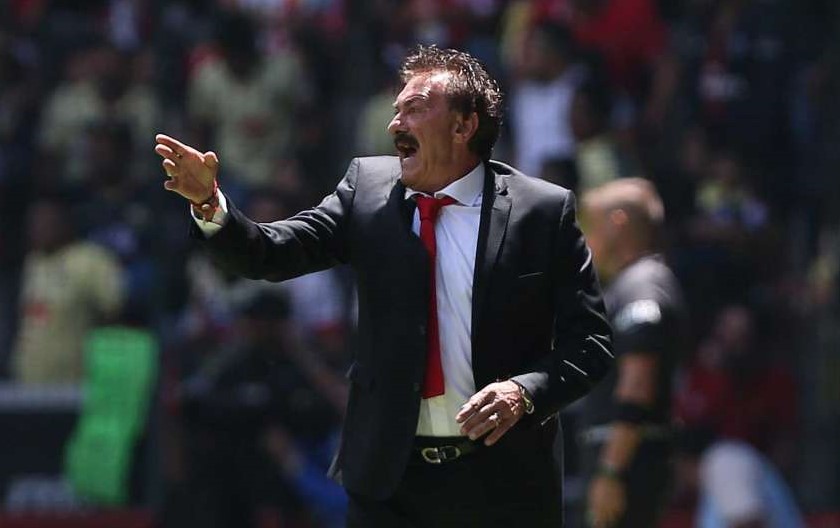

What is “La Salida Lavolpiana”?
In modern football, the tactical zeitgeist’s lexicon has centred itself around a few choice buzzwords. From ‘pressing’ to ‘triangles, the language we use to describe our strategic approach to the game is universal and entrenched. Though the concept has been around since the days of kick-and-rush, one term in particular is becoming increasingly pervasive in our collective tactical discussion: “overload”.
It’s a remarkably simple but uniquely powerful notion. If the team in possession has more players in any area of the pitch, their chances of positively progressing the ball are increased. Schoolboy stuff, you might think.
But crucial to any tactical theory is finding a way to overload the opposition in such a way which doesn’t compromise the defensive integrity of your own team. This balancing act between defence and attack is the reason we don’t see all 11 players storming up the pitch at every opportunity. No matter how much we as fans love to see players barrelling about the pitch, fluctuating chaotically from defence to attack, it makes infinitely more sense from a coach’s standpoint to progress upfield in a more calculated fashion. This approach generally necessitates creating overloads, not just in the final third, but over every blade of green grass.
Enter Ricardo La Volpe, the Buenos Aires-born coach whose tobacco-stained fingerprints can be found all over the football of Pep Guardiola, Julian Nagelsmann, Thomas Tuchel as well as hundreds of hundreds of. Enter La Salida Lavolpiana.
La Volpe developed his trailblazing brand of cavalier attacking football in charge of the Mexico national team and Boca Juniors in the early-to-mid 2000s. The principles which underpin his sides’ attacking gameplay is the Lavolpiana build up, sometimes referred to as the “three-man build-up”. In a four-at-the-back formation, this build-up is initiated when a defensive midfielder drops back between the two centre-halves, prompting the two full-backs to push up towards the midfield line.
In theory, this should bring about a numerical advantage over the opposition.
The goalkeeper, the two centre-halves and the withdrawn defensive midfielder-cum-defender create a matrix of passing options. Whichever player is in possession should, in theory, always have an out-ball. If the opposition is closing down the man on the ball and the passing angles around him with two players, they should still have two passing options open to them. If they are closing down with three players, the man on the ball should have at least one.
The advancing full-backs provide another out-ball for the base of the three-man build-up. Assuming the team in possession are playing with three central midfielders, the remaining two will look to create a structure which is conducive to attacking progression. This usually means one dropping into the space vacated by the defensive midfielder-cum-defender and the other moving into space, looking to cue a line-breaking pass.
As the ball moves up the pitch, the attacking team’s wingers have the option to push infield or to stay wide. If they opt for the former, this has the potential to create an overload in the centre of the pitch. Depending on the play’s axis of movement, this move also allows space for the full-backs to overlap the wingers, creating a potentially decisive overload which creates a dangerous crossing opportunity. If the wingers choose to act as more conventional wide-men, they will occupy the opposition full-backs, forcing them to stay in their withdrawn defensive shape and creating space in the channels for a through-ball.
The number 9 in La Volpe’s system will usually stay central in a fairly advanced position, busying the opposition centre-backs and again making space in the channels for the wingers and overlapping full-backs to plunder. In staying in this advanced role, the centre-forward isolates the opponents’ defence from their midfield, creating a less congested space in which the attacking midfielders can operate.
This is a broad overview of the classical system implemented by La Volpe. There are countless variations on the same theme. Thomas Tuchel at Borussia Dortmund and Paris Saint Germain, for instance, has asked his central-defenders to shift sideways, allowing a central midfielder to drop into the wide centre-back position rather than in between the two men as in La Volpe’s system.
Pep Guardiola too has taken La Volpe’s system and stamped his mark onto it in Catalan wax. He has employed “inverted full-backs” – wide-defenders who move into more central positions ahead of the back four – to create an overload in defensive midfield. Lateral ball progression is made much easier by the fact that the attacking team has license to reconstruct itself into a shape which essentially has eight players making up the spine of their team (nine if you count the goalkeeper, which Guardiola definitely does).
The above are just two takes on Salida Lavolpiana. As mentioned, there are many more. The proactive strategy we see in elite-level football today is due, in large part, to him.
Find more about this subject on the online course “Positional Play in Soccer”
Follow us on Facebook!
Categories
Latest Courses
-
9 Lessons
-
1 Lesson
-
6 Lessons
You May Also Like
- Blog
- August 1, 2022
- Blog
- June 3, 2022
- Blog
- May 27, 2022
Developed by Brandit Digital Media Services.





